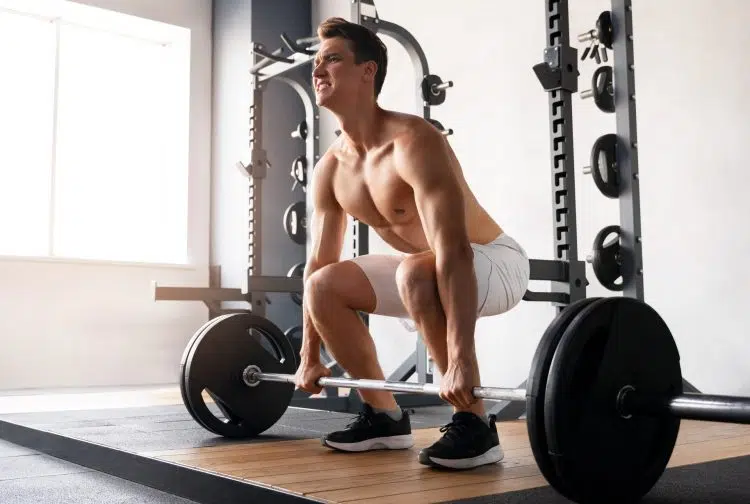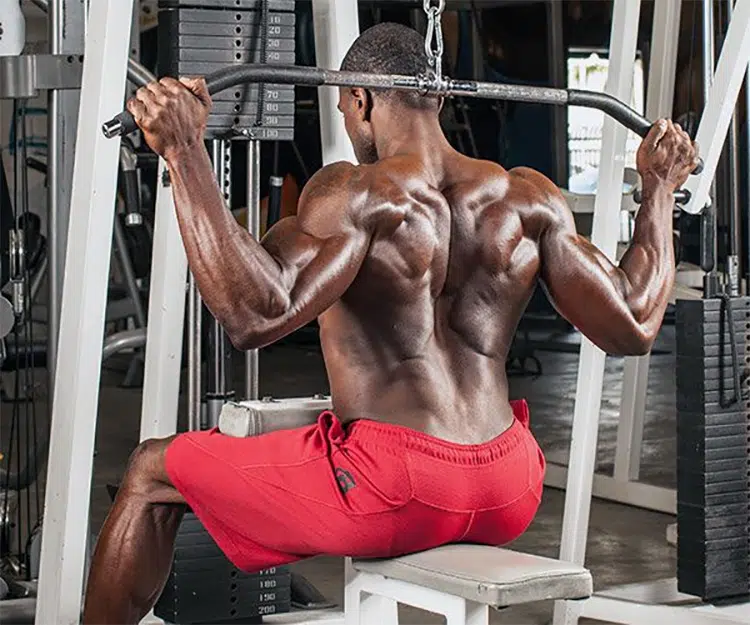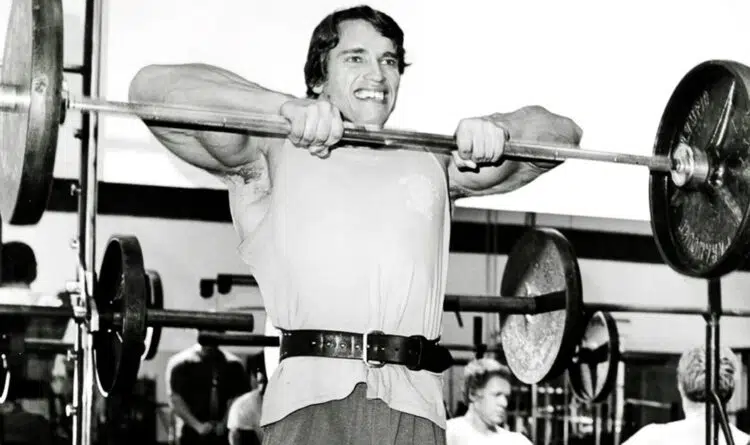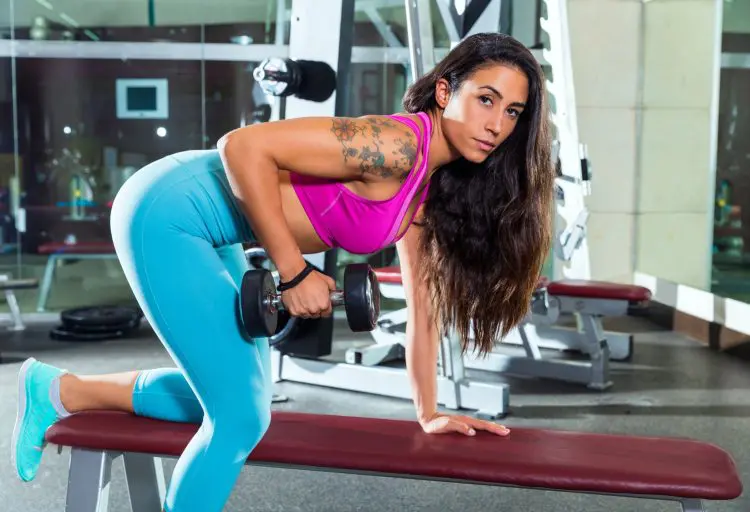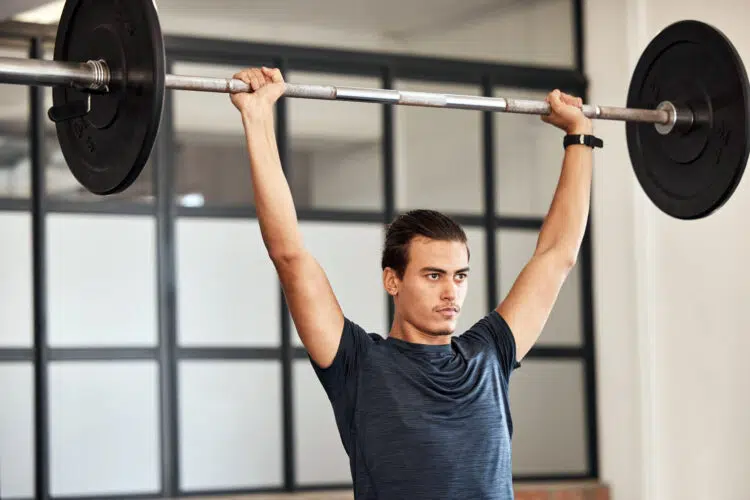There is only so much time you can spend in the gym. Plus, there is a point of diminishing marginal returns, after which extra effort yields minimal gains and may even hinder your progress.
Elite athletes prioritize streamlining their training regimes, so each exercise helps them get the best bang for their buck. Relying on substandard movements not only slows down your progress but also significantly increases injury risk.
As a personal trainer who spends most of his days in the gym, I see people do the same inefficient exercises daily, making them feel like they are stuck in a rut. These folks ultimately give up before attaining their transformation objectives.
It was time someone did something about this, and I’m taking the lead.
I have compiled a list of five common exercises that should be eliminated from hypertrophy-focused training regimes.
Keep in mind that the five exercises listed in this article are ineffective for maximizing hypertrophy. However, they might be effective for other goals, like strength gains or building explosive power. For instance, heavy deadlifts are not the best exercise for building muscle mass but are among the top-tier lifts for promoting strength gains.
Level Up Your Fitness: Join our 💪 strong community in Fitness Volt Newsletter. Get daily inspiration, expert-backed workouts, nutrition tips, the latest in strength sports, and the support you need to reach your goals. Subscribe for free!
In this article, I take you over five staple exercises in hypertrophy-focused workout programs that might not be as effective as they are touted to be. Drawing from my 17 years of lifting experience (and scientific evidence), I also share five alternatives that will help you meet your muscle-building ambitions.
Things To Remember While Training For Hypertrophy
Muscle growth is the result of three factors — mechanical tension, muscle damage, and metabolic stress.
Experts believe three factors make certain exercises the most effective for promoting hypertrophy. These characteristics will also help you understand the limitations of similar exercises and how you can make smarter choices to maximize muscle growth.
- Stretch and Tension: An effective muscle-building exercise must deliver a deep stretch in the fully lengthened position. (1)
- Simple Progression: Increasing the weight or reps to progressively overload the target muscles should be easy and convenient. (2)
- Must Feel Good: The exercise must offer a smooth and consistent resistance profile, resulting in a robust mind-muscle connection and muscle pumps.
Exercise 1: Behind-the-Neck Lat Pulldown
If you’ve ever tried this exercise, you’d agree that it is one of the most uncomfortable lat pulldown alternatives. Now, don’t get me wrong, I’m not implying that every exercise that might feel uncomfortable initially is bad for you; it could simply be the result of a lack of mobility and muscle imbalances.
Behind-the-neck lat pulldowns place your upper body in a vulnerable position during the concentric phase, which can strain your shoulders, rotator cuffs, and spine. This unnatural movement can also compress the tendons and bursa in your shoulder joint, increasing the possibility of shoulder impingement.
Furthermore, pull the bar too aggressively, and you risk hitting it on the back of your neck, putting you at risk of injury.
Better Alternative: Wide-Grip Pull-Ups
I would rather suggest adding this bodyweight exercise to your training regime. The catch here is that you must perform these pull-ups with a full range of motion (ROM), fully extending your elbows and shoulders at the bottom and bringing your chin over the bar at the top.
Make no mistake, even the most advanced lifters have difficulty completing 10 full ROM pull-ups.
This bodyweight exercise maximizes lat activation and hypertrophy, improves shoulder health, and boosts functional strength.
How To Perform Wide-Grip Pull-Ups:
- Stand on an elevated platform like a flat bench or dumbbell.
- Grab the pull-up bar with a wide overhand grip.
- Step off the bench one foot at a time. Your body should be fully extended in the starting position.
- Initiate the movement by flexing your elbows and driving them toward your back pockets.
- Your chin should be the bar at the top of your range of motion (ROM).
- Pause in the fully shortened position.
- Slowly lower to the starting position and pause briefly.
Coach Tip: I recommend using lifting straps for this exercise to ensure your grip doesn’t become your limiting factor.
Exercise 2: Barbell Upright Row
When performed with an incorrect form (which many lifters tend to do), upright rows are one of the most injury-prone exercises.
Upright rows force the rotator cuffs, tendons, and bursa into a cramped, awkward position, putting you at risk of shoulder impingement and sidelining your progress. The movement mechanics of this exercise place excessive stress on the vital shoulder structure, which can lead to strains, tendinitis, and even tears.
Better Alternative: Dumbbell Shrug
I have my personal training clients opt for the humble dumbbell shrugs. This movement biases the trapezius muscles without compromising shoulder health. The dumbbell variation offers a greater ROM compared to using a barbell, which can also help improve posture and neck strength.
How To Perform Dumbbell Shrug:
- Stand upright with a dumbbell in each hand resting against your thighs.
- While maintaining a slight bend in your elbows, pull your shoulders toward your ears as high as possible.
- Hold the peak contraction for a couple of seconds.
- Slowly lower to the starting position.
Coach Tip: Avoid using momentum by jerking your knees, as it removes the tension from the traps and transfers it to the lower body muscles, like the glutes and calves.
Level Up Your Fitness: Join our 💪 strong community in Fitness Volt Newsletter. Get daily inspiration, expert-backed workouts, nutrition tips, the latest in strength sports, and the support you need to reach your goals. Subscribe for free!
Exercise 3: Dumbbell Triceps Kickback
If I were to choose one exercise that should be banned in gyms across the world, it would be dumbbell tricep kickback. Yup, this is how strongly I feel about this lift.
This exercise’s line of pull places the most tension on the triceps in the fully shortened position, where they are already at their strongest. Plus, there is absolutely zero stress in any other position.
Furthermore, most lifters use momentum during this exercise, which renders it absolutely useless. They’ll bring the dumbbell to their chest and explode the dumbbell to the top of the ROM. Plus, many people can never get their body position right during this exercise, further hampering their progress.
Better Alternative: Cable Overhead Extension
Conversely, overhead cable tricep extensions deliver the most effective leverage to target the triceps, especially the long head, which is usually the most stubborn. The cables deliver constant tension throughout the movement, maximizing muscle tension and growth.
How To Perform Overhead Cable Extension:
- Set the cable pulley at hip height with a straight bar attachment.
- Grab the bar with a pronated grip and turn around so your upper arms are perpendicular to the floor and your elbows are fully flexed.
- Extend your elbows, pause, and contract the triceps at the top of your ROM.
- Use a slow, controlled motion to return to the bottom position.
Coach Tip: Folks who have trouble developing a mind-muscle connection with the triceps should opt for the single-arm variation.
Exercise 4: Seated Calf Raise
Although seated calf raises might feel like an excellent way to target the lower legs, they are not the most effective for promoting hypertrophy. Why is that, you ask?
Calves comprise two muscles — soleus and gastrocnemius. Seated calf raises isolate the soleus muscle, which sits deeper under the gastroc. While seated raises might help you build thicker calves, they are not as effective for building the inverted heart-shaped muscle you see on the back of your lower legs.
Dr. Mike Israetel, Ph.D. in Sport Physiology, explains that the soleus muscles mostly comprise slow-twitch muscle fibers. Furthermore, they are resistant to hypertrophy, as evolution designed them primarily to help you walk throughout the day without cramping up.
Better Alternative: Standing Calf Raise
The seated (knee bent) position significantly shortens the ROM the gastroc muscle can go through, limiting its growth potential. Gastroc development is incredibly important as it is responsible for explosive movements like jumping and sprinting.
Adding standing calf raises to your exercise regimen will take your lower leg muscle development to the next level.
How To Perform Standing Calf Raise:
- Position the toes and balls of your feet on the edge of the standing calf raise machine’s foot platform.
- Your ankles should be fully dorsiflexed in the starting position, resulting in a deep calf stretch.
- Plantarflex your ankles and pause in the fully shortened position.
- Slowly return to the starting position, milking the eccentrics.
Coach Tip: Research shows that long-length partials (bottom half of the ROM) during calf raises lead to greater calf hypertrophy compared to full ROM or shortened partials. (3)
Exercise 5: Barbell Overhead Press
The barbell overhead press is an excellent exercise for building shoulder strength. However, you’re shortchanging yourself by keeping it in your hypertrophy-focused routine.
Overhead presses demand significant shoulder mobility, which many bodybuilders lack. This can force your body into a position that can strain the shoulder joints, muscles, tendons, and ligaments, leading to pain, inflammation, and even injury.
This lift also involves several other factors, like core stability, upper body strength, and precise movement patterns. Furthermore, most of the focus during this exercise is on the lifting phase, whereas research shows the eccentric phase is more important for promoting hypertrophy. (4)
Better Alternative: Machine Shoulder Press
If you are primarily training for hypertrophy, I recommend prioritizing machine shoulder presses. The guided line of pull provides support and stability, allowing you to focus on a deep mind-muscle connection and contractions.
Machine shoulder presses are invaluable for beginners or those with mobility issues.
How To Perform Machine Shoulder Press:
- Sit on the machine’s seat and grab the handles with a wide overhand grip.
- Your elbows should align with your wrists throughout the ROM.
- Brace your core and extend your elbows.
- Pause in the fully locked-out position to max out the muscle pump. (5)
- Return to the bottom position with a slow, controlled motion.
- Repeat for recommended reps.
Coach Tip: Set the machine’s seat so the handles are as close to your shoulders as possible in the starting position. Avoid setting the seat at the lowest setting as it limits the ROM and subsequent muscle stimulation.
Conclusion
Don’t expect overnight results as soon as you switch the exercises listed in this article. Instead, carefully evaluate all the other exercises in your regime based on the three key factors — stretch and tension, muscle pumps and mind-muscle connection, and progressive overload potential — for maximizing muscle hypertrophy.
Like any other training regime, you must stay consistent and disciplined and give the new programming at least eight weeks to work its magic.
If you have any questions about the five exercises (or their alternatives) listed in this article, post them in the comments below, and I’ll be happy to help!
References
- Pedrosa, G. F., Lima, F. V., Schoenfeld, B. J., Lacerda, L. T., Simões, M. G., Pereira, M. R., Diniz, R. C. R., & Chagas, M. H. (2022). Partial range of motion training elicits favorable improvements in muscular adaptations when carried out at long muscle lengths. European journal of sports science, 22(8), 1250–1260. https://doi.org/10.1080/17461391.2021.1927199
- Plotkin, D., Coleman, M., Van Every, D., Maldonado, J., Oberlin, D., Israetel, M., Feather, J., Alto, A., Vigotsky, A. D., & Schoenfeld, B. J. (2022). Progressive overload without progressing load? The effects of load or repetition progression on muscular adaptations. PeerJ, 10, e14142. https://doi.org/10.7717/peerj.14142
- Kassiano, W., Costa, B., Kunevaliki, G., Soares, D., Zacarias, G., Manske, I., Takaki, Y., Ruggiero, M. F., Stavinski, N., Francsuel, J., Tricoli, I., Carneiro, M. A. S., & Cyrino, E. S. (2023). Greater Gastrocnemius Muscle Hypertrophy After Partial Range of Motion Training Performed at Long Muscle Lengths. Journal of strength and conditioning research, 37(9), 1746–1753. https://doi.org/10.1519/JSC.0000000000004460
- Azevedo PHSM, Oliveira MGD, Schoenfeld BJ. Effect of different eccentric tempos on hypertrophy and strength of the lower limbs. Biol Sport. 2022 Mar;39(2):443-449. doi: 10.5114/biolsport.2022.105335. Epub 2021 Jun 1. PMID: 35309524; PMCID: PMC8919893.
- Hirono, T., Ikezoe, T., Taniguchi, M., Tanaka, H., Saeki, J., Yagi, M., Umehara, J., & Ichihashi, N. (2022). Relationship Between Muscle Swelling and Hypertrophy Induced by Resistance Training. Journal of strength and conditioning research, 36(2), 359–364. https://doi.org/10.1519/JSC.0000000000003478

